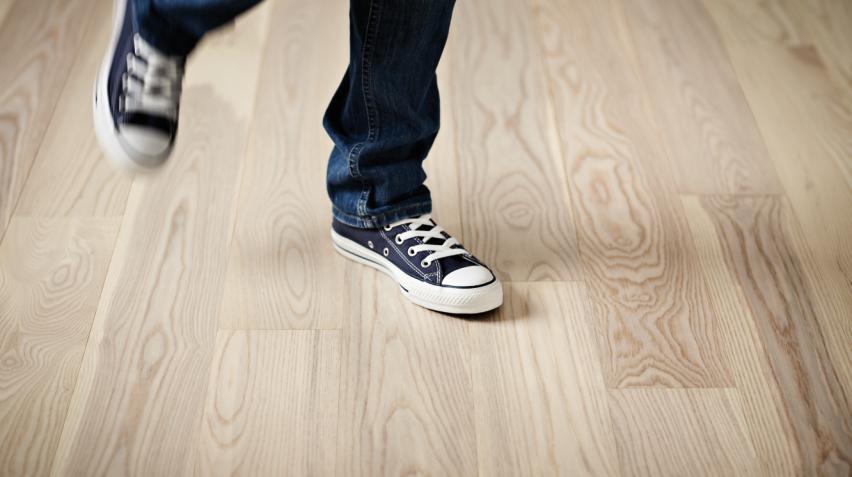Is It Time to Refinish Your Wood Floors? Signs, Costs, and Options
Wood floors are a lasting investment that add warmth and character to any home, but daily life can leave them looking tired or worn over time. If you’re noticing scratches, dullness, or uneven color on your wood flooring, it might be time to consider refinishing. In this guide, you’ll learn how to spot the signs that your floors need attention, understand what’s involved in the refinishing process, and get a clear overview of expected costs and available options. Whether you want to restore your floor’s natural beauty or update its look, this article will help you make an informed decision about maintaining and protecting your home’s hardwood surfaces.
Signs Your Wood Floors May Need Refinishing
Beautiful wood floors can last for generations, but everyday life leaves its mark. Over time, it’s natural for even the most durable surfaces to show some wear. Recognizing when your floor needs attention is the first step toward restoring its original charm. Look for these common signs that indicate it may be time for wood floor refinishing:
- Noticeable scratches and scuffs, especially in high-traffic areas
- Loss of sheen or a dull, lifeless appearance even after cleaning
- Faded or uneven coloring caused by sunlight or spills
- Water stains, dark spots, or evidence of moisture damage
- Small areas where the finish has worn away, exposing bare wood
If you notice one or more of these issues, refinishing can breathe new life into your flooring and help preserve its value and beauty. To keep your floors looking their best between treatments, you might find expert cleaning and maintenance advice for hardwood floors helpful.
What Is Wood Floor Refinishing?
Wood floor refinishing is a process designed to restore the surface of your hardwood floors, removing signs of wear and protecting the underlying wood. Instead of replacing the entire floor, refinishing allows you to renew the top layer—removing scratches and stains, updating the finish, and enhancing the natural grain of the wood. This solution helps prolong the life of your flooring, making it a practical and sustainable choice for private homes. If you are considering new solid hardwood, you may want to explore the variety of oak hardwood flooring – light oak, 100% solid wood options and their durability.
The Wood Floor Refinishing Process Step by Step
Preparation and Safety
Before refinishing begins, it’s important to clear the area. Move all furniture and rugs out of the room. Cover nearby surfaces to limit dust and debris. Proper ventilation and the use of safety equipment—such as masks and goggles—ensure a safe, comfortable process for everyone involved.
Sanding and Repairs
Sanding is a key part of wood floor refinishing. Using specialized equipment, the old finish is gently removed, revealing fresh wood beneath. This step also smooths out minor imperfections. If there are deeper scratches, dents, or damaged boards, these can be repaired or replaced at this stage to ensure a flawless result.
Staining and Finishing Options
Once the floor’s surface is prepared, you can choose to update its color with a stain or keep its natural look. Next, a protective finish is applied—options include ultra matt lacquer or nature-inspired oil, each enhancing the wood’s grain and resilience. The right finish depends on your lifestyle, desired appearance, and maintenance preferences. If you prefer a distinctive pattern, take inspiration from the herringbone parquet floor in solid wood or consider the Hexparket collection for a graphic touch.
Drying, Curing, and Post-Process Care
After the final coat is applied, it’s important to allow ample drying and curing time before moving furniture back in. This ensures the finish sets properly and provides lasting protection. Follow simple maintenance tips—like gentle cleaning and using felt pads on furniture—to keep your refinished floor in prime condition.
Wood Floor Refinishing Costs and What to Expect
The cost of wood floor refinishing varies depending on factors like the size of the area, floor condition, chosen finish, and whether you opt for professional help or tackle it yourself. Generally, professional refinishing offers the best long-term value, especially for larger or more complex projects. When budgeting:
- Consider the square footage of your space
- Factor in any necessary repairs or board replacements
- Take into account your choice of stain and finish
- Remember to plan for drying and curing time
Consulting with an expert can help you understand your options and ensure the best results for your investment.
Benefits of Refinishing vs. Replacing Your Wood Floors
Choosing wood floor refinishing over full replacement offers several advantages:
- Preserves the original character and charm of your flooring
- More sustainable, with less material waste
- Typically more cost-effective than installing new floors
- Less disruptive and time-consuming for your home
With proper care, refinished wood floors can continue to enhance your living space for years to come. For those interested in a different wood species, the Beech - 2 Strip Hardwood Flooring option is known for its strength and durability.
Choosing the Right Finish for Your Lifestyle
Every household is unique, so it’s important to select a finish that matches your daily routine and aesthetic preferences. Considerations include:
- Ultra matt lacquer for a modern, low-gloss look that resists wear
- Oil finishes that bring out the wood’s natural warmth and make touch-ups simple
- Maintenance needs and compatibility with your cleaning routines
- Indoor climate labeling and low-emission options for healthy living
Junckers offers a range of surface treatments, ensuring your refinished floor suits both your style and functional requirements.
Maintaining Your Floors After Refinishing
Easy, consistent care will help your newly refinished wood floors stay beautiful:
- Sweep or vacuum regularly to remove dust and dirt
- Use a damp (not wet) cloth for cleaning—avoid harsh chemicals
- Place mats at entrances and felt pads under furniture legs
- Address spills promptly to prevent staining
For practical guidance, Junckers provides cleaning and maintenance advice for hardwood floors to help you protect your investment and enjoy lasting results.
Get Expert Help With Your Wood Floor Refinishing Project
Refinishing your wood floors is a valuable way to renew your living space. If you’re unsure where to start, need technical guidance, or want to discuss your options, Junckers is here to help. For direct assistance, contact Junckers. If you’re seeking inspiration or want to see the full range, visit solid hardwood flooring options for an overview of available products and finishes.
Frequently Asked Questions About Wood Floor Refinishing
How often can wood floors be refinished? add
This depends on the thickness of your floorboards, but solid hardwood floors can typically be refinished several times during their lifespan.
Is wood floor refinishing compatible with underfloor heating? add
Yes—Junckers’ floors and finishes are fully compatible with underfloor heating when installed according to guidelines.
How long does wood floor refinishing take? add
The process usually takes several days, including drying and curing time. The exact timeline depends on your floor’s size and finish choice.
Can I change the look of my floor during refinishing? add
Absolutely. Refinishing gives you the opportunity to update color, sheen, or finish to match your current style.
For more answers, contact Junckers’ expert team.



